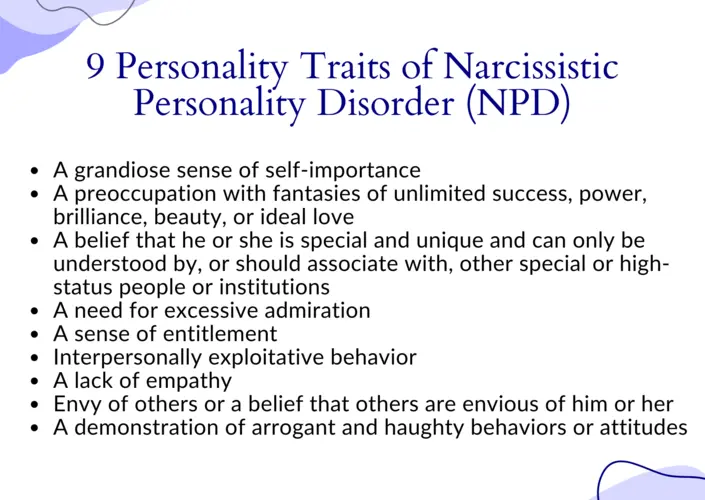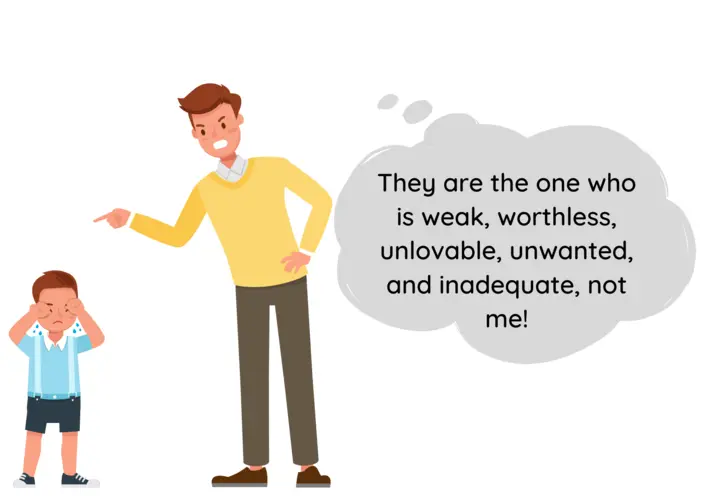There are many benefits to understanding how narcissists act in public. For example, knowing how narcissists act in public would help you spot and avoid the narcissists in your surrounding environment. It would also help you identify the narcissists that are already in your life.
Generally speaking, narcissists do a really good job at portraying themselves as charming, charismatic, and pleasant when they are in public. However, if you pay close attention, you will notice that they can be quite grandiose, manipulative, entitled, and cruel in public as well.
This article is going to walk you through both the public persona that narcissists fabricate and the core traits of narcissistic personality disorder (NPD) reveal themselves when you take a closer look at a narcissist’s behavior in public.
Lynn Catalano Esq., a Professional Speaker, Toxic Relationship Coach, and Attorney, Explains How Narcissists Act at Work
For the best experience, please rotate your mobile device sideways.
Narcissists Can Be Charming, Charismatic, and Pleasant in Public
Narcissists dedicate an extraordinary amount of their time to creating a positive public persona that attracts a sufficient amount of narcissistic supply, which is the validation, admiration, reassurance, power, and control that narcissists get from their surrounding environment.

They do this by mirroring society. In this context, mirroring refers to a narcissist’s ability to absorb an incredible amount of information about a person, or group of people (i.e. society) and use that information to create a public persona that portrays them as “perfect” to others.
Suggested Reading:
Narcissists are very good at mirroring. Our article “How Are Narcissists Made?“ explains how narcissists have been mirroring others their entire life and our article “Are Narcissists Good at Mirroring?“ has a ton of information that will help you better understand this infamous ability of theirs.
In the short term, a narcissist’s ability to mirror society works well for them because they simply construct their public persona out of the superficial, materialistic, and trivial aspects of life that society values (i.e. money, appearances, status, etc.).

As you can imagine, narcissists are also very good at mirroring individuals. A simple example of this would be if you were speaking to a narcissist and opened up to them by saying, “My mom passed away when I was young.”
They could mirror you by saying something like, “I don’t want to take anything away from what you just said but my father died when I was young as well. I just wanted you to know that I know what it feels like.”

What mirroring does is it manipulates you into feeling heard, understood, and supported.
In romantic settings, mirroring targets our desire for true love. In friendships and family settings, mirroring goes after our desire for an emotionally available, responsive, and consistent friend or family member. In work environments, mirroring is centered around the betterment of our careers.
Mirroring allows the narcissist to portray themselves as the “perfect” person for us and that is why narcissists often come off as charming, charismatic, and pleasant in public. But again, this isn’t sustainable. Eventually, a narcissist’s true colors will begin to show when they sense that they have us hooked and begin the devaluation phase.
Suggested Readings:
Our articles “How Do Narcissists Use Mirroring?“, “How Long Does the Love Bombing Phase Last? (Survey)“, and “What Is the Devaluation Phase?“ have a lot of helpful information that you can use to understand when narcissists stop mirroring and what happens once they stop mirroring.
Narcissists Can Be Grandiose, Manipulative, Entitled, and Cruel In Public
As we mentioned before, if you pay close attention to a narcissist in public, you will notice that they can be quite grandiose, manipulative, entitled, and cruel in public as well. The reason for this is that they have many deeply rooted traits that they can’t hide.
In this section of the article we are going to guide you through these traits and give you examples of how they could manifest in public. According to the American Psychiatric Association’s Diagnostic and Statistical Manual of Mental Disorders, Fifth Edition (DSM-5), narcissistic personality disorder is defined as the following:

Some of the most common ways that these traits manifest in public are through the stories and lies that narcissists tell, narcissistic rage, and scapegoating.
They Tell Stories to Support Their Grandiose Fantasies and Self-Perception
Narcissists need to be the center of attention at all times. One of the ways that they ensure this happens is by telling captivating stories to others.
In all honesty, the stories that narcissists tell can be fascinating. But upon a closer look, you can clearly see that they are designed to support the grandiose fantasies that they have about themselves and their surrounding environment.
For example, imagine that you’re at an office party and your narcissistic boss has everyone huddled around him/her because they are telling this amazing story about the time he/she dated a famous movie star.

They are so charming, charismatic, and articulate that the story is almost believable. But when you take a closer look, you realize that they don’t have any proof and the photos that they have with the movie star look like ones that you’d get at a meet-and-greet.
You think to yourself, “Why would they lie about something like this?”
Well, when believed by others, the stories that narcissists tell help them accumulate narcissistic supply, maintain a grandiose self-perception, and maintain a belief that they are special and unique.

It can be terribly confusing because as we mentioned before, narcissists can be so charismatic, articulate, and charming when telling a story. But as a general rule, people who are truly special, unique, famous, rich, etc., don’t need the validation of others because it is who they are.
They Go Into a Narcissistic Rage When They Get Upset
Narcissistic rage is an unpredictable, explosive, and unjustifiable response that narcissists often have when they experience a contradiction to their grandiose self-perception and/or public person.
For example, imagine that you’re at an airport with your friends and family getting ready to fly to Italy for vacation. One of your friends, who happens to be a narcissist, has a problem with their ticket.

They were under the impression that they booked a first class ticket but the airport is telling them that they didn’t. Obviously, this contradicts their grandiose self-perception and public persona because the mere thought of having to fly like a “regular person” is repulsive to them.
Unfortunately, it is too late for them to upgrade their ticket or buy a new one because the flight is fully booked. This makes them furious and throws them into a narcissistic rage.
They begin to scream at the airport staff because they believe that they’ve been wronged. This goes on for a while before they are removed by the airport security and banned from flying.
Interestingly enough, even though a narcissist’s emotional immaturity prevents them from controlling their rage, they know that their rage is wrong. Not because it is abusive towards others, but because it contradicts their grandiose self-perception and public persona.
You know, going into a rage isn’t charming, charismatic, or pleasant.

Narcissistic rage is unpredictable, explosive, and unjustifiable. Because of their emotional immaturity, it is very common for a narcissist to go into a rage in public.
Suggested Readings:
Narcissistic rage can manifest in the form of physical abuse, sexual abuse, emotional/psychological abuse, and/or neglect. Our articles “How Long Does Narcissistic Rage Last?“ and “Why Do Narcissists Go Into a Rage?“ have a lot of helpful information that you can use to learn more about narcissistic rage.
They Target Specific People and Use Them as a Scapegoat
In the narcissistic realm, a scapegoat is a person that a narcissist will direct a disproportionate level of abuse toward in comparison to the other people the narcissist interacts with on a regular basis.
A narcissist chooses a scapegoat based on their own fears, feelings of jealousy, sense of inadequacy and insecurities. What this means is that scapegoats are chosen because they somehow trigger the fears, feelings of jealousy, sense of inadequacy and insecurities of the narcissist.
For example, a narcissistic parent might use their child as a scapegoat because they view the child as weak.

The child isn’t really weak, they are just a child. But the narcissistic parent has deeply rooted feelings of weakness and inadequacy that they can’t regulate so they project them onto the child by punishing and abusing them for being “weak”.
This allows the narcissist to attack parts of their identity that they find unacceptable without ever acknowledging that they exist.

Narcissists always have scapegoats because they are too emotionally immature to regulate their painful thoughts, feelings, and emotions through non-narcissistic methods such as self-awareness, building healthy relationships, therapy, and self-reflection. They use scapegoats as a form of regulation.
If you have someone in your life who you suspect is a narcissist, pay attention to how they treat others. Is there someone who they target? Are they always blaming someone for their shortcomings?
Narcissists will always need a scapegoat and have no problem treating the scapegoat poorly in public because for the narcissist, the scapegoat represents the parts of themselves that they hate the most.
What Should You Take Away From This Article?
To the untrained eye, narcissists come off as charming, charismatic, articulate, and pleasant in public. But when you take a closer look, you can see the grandiosity, manipulative tendencies, sense of entitlement, arrogance, and cruelty as well.
About the Author

Hey, I’m Elijah.
I experienced narcissistic abuse for three years.
I create these articles to help you understand and validate your experiences.
Thank you for reading, and remember, healing is possible even when it feels impossible.
References:
Wright, Kirstie, and Adrian Furnham. “How to spot a narcissist: Mental health literacy with respect to Narcissistic Personality Disorder.” Personality and Mental Health 9.2 (2015): 150-161.
